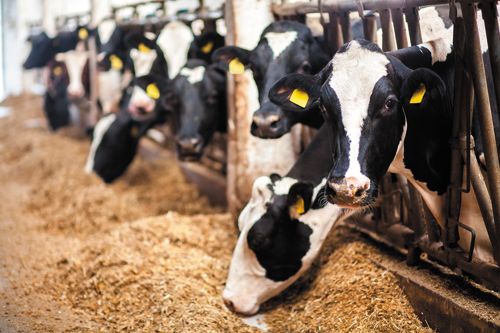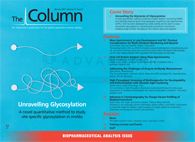Improving Foot and Mouth Vaccine Stability Using HPSEC
Researchers from the Chinese Academy of Science in Beijing, China, have used high‑performance size-exclusion chromatography (HPSEC) and differential scanning calorimetry (DSC) to study the stabilization of inactivated foot and mouth disease virus.
Photo Credit: ArtemZ/Shutterstock.com

Researchers from the Chinese Academy of Science in Beijing, China, have used highâperformance size-exclusion chromatography (HPSEC) and differential scanning calorimetry (DSC) to study the stabilization of inactivated foot and mouth disease virus (1).
Highly contagious and economically devastating, foot and mouth disease (FMD) is synonymous with mass livestock cullings and exclusion zones. Affecting clovenâhoofed animals such as cattle, swine, sheep, and goats, the virus has emerged numerous times around the globe. Notable outbreaks occurred in the UK in 2001 and 2007 costing the British agricultural economy billions in lost revenue; in mainland China FMD outbreaks have regularly been covered up leaving the true global scale of FMD infection a complete mystery.
Given the enormous damage this virus is capable of, efforts to create new vaccines for emerging strains have intensified. Recombinant protein and peptide vaccines have recently been reported (2,3), however, these have so far not been as effective as the conventional inactivated virus products (4). Poor stability of the inactivated FMD vaccine (FMDV) is a considerable challenge to its production, requiring cold chain transportation and storage, therefore increasing costs and making FMD vaccination difficult in areas where the environment is harsh. Researchers attempted to identify the best condition for stabilizing FMDV using HPSEC and DSC.
Results indicated a pH of 7.5–8.0 with an excipient of 20% sucrose and glycerol offered the best protection. It significantly prolonged the half-life of the vaccine at 45 °C from less than 30 min to more than 3 days, allowing transportation and storage of the recombinant protein vaccine under harsh conditions and increasing its viability as an effective vaccine option.
References
- Y. Yang et al., Vaccine35, 2413–2419 (2017).
- B. Mohana Subramanian et al., Antiviral Res.96, 288–295 (2012).
- Z. Li et al., Plos One7, e43849 (2012).
- M.A. Spitteler et al., Vaccine29, 7182–7187 (2011).

Detecting Hyper-Fast Chromatographic Peaks Using Ion Mobility Spectrometry
May 6th 2025Ion mobility spectrometers can detect trace compounds quickly, though they can face various issues with detecting certain peaks. University of Hannover scientists created a new system for resolving hyper-fast gas chromatography (GC) peaks.
University of Oklahoma and UC Davis Researchers Probe Lipidomic Profiles with RP-LC–HRMS/MS
May 6th 2025A joint study between the University of Oklahoma Health Sciences Center (Oklahoma City, Oklahoma) and the UC Davis West Coast Metabolomics Center (Davis, California) identified differentially regulated lipids in type 2 diabetes (T2D) and obesity through the application of reversed-phase liquid chromatography-accurate mass tandem mass spectrometry (RP-LC-accurate MS/MS).
Automated Sample Preparation (ISO 20122) for MOSH/MOAH in Seasoning Oils
May 6th 2025This work presents an Automated Sample Preparation procedure for MOSH/MOAH analysis of Seasoning Oils. We compare results from a manual epoxidation procedure compliant with DIN 16995 with results based on fully automated sample preparation (epoxidation and saponification) compliant with ISO 20122. In both cases, online clean-up via activated aluminum oxide (AlOx) are used to remove interfering n-alkanes from the MOSH fraction during the HPLC run. Automated data evaluation using a dedicated software (GERSTEL ChroMOH) is presented.

.png&w=3840&q=75)

.png&w=3840&q=75)



.png&w=3840&q=75)



.png&w=3840&q=75)











